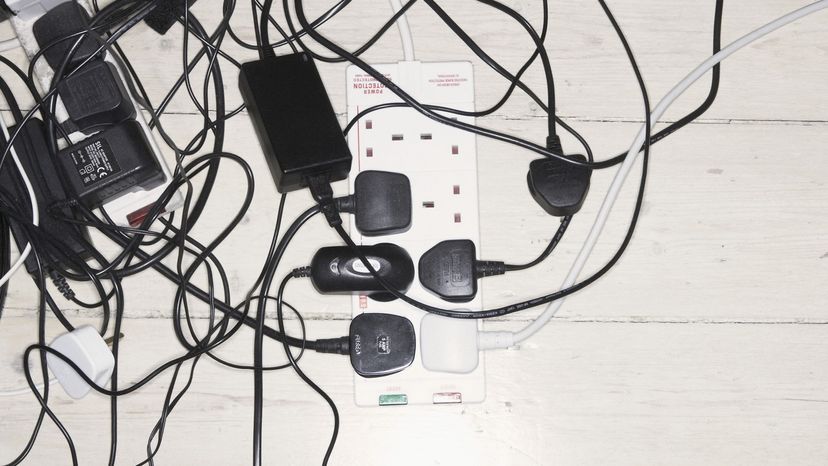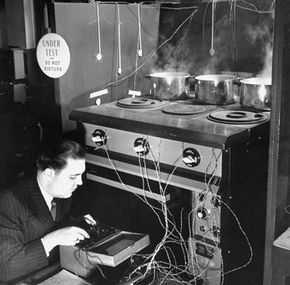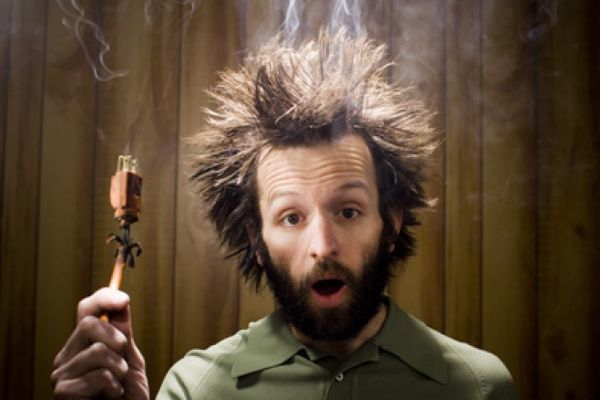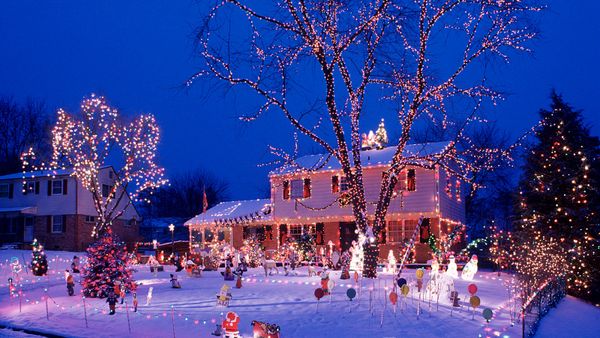
It seems to happen most around the holidays -- the electrical outlet begins putting on extra weight. There are nine strings of lights for the tree, electric candles, a CD player with holiday music and -- for some reason -- a George Foreman Grill. It seems like just staring at this mess of electrical cords for too long will give it just the extra boost it needs to catch fire.
Overloaded outlets do cause fires -- an estimated 5,300 annually in American households [source: CPSC]. Almost 2,000 of those occur during the holidays [source: ESFI]. Visions of burning sugarplums got HowStuffWorks to wonder -- just how many things can you plug into an electrical outlet before it catches fire? It depends -- there are a variety of factors that can make a difference.
Advertisement
To figure out how many things you can plug into an outlet before it will catch fire, first we need to get to the heart of how electricity works. At any given moment, the average American house has 120 volts of electricity flowing though it. Somewhere in your house, you'll find a wall-mounted box, containing either circuit breakers or fuses (found in older homes).
Circuit breakers and fuses act as failsafes against electrical overload. They regulate the amount of current -- the volume of electrons moving through a conductor, such as an electrical cord -- which can be drawn from a circuit. This current is expressed in amperes, or amps. Most circuit breakers and fuses regulate at either 15 or 20 amps.
If too much current is drawn from the circuit, the circuit breaker trips or the fuse blows, breaking the circuit to prevent an overload. But circuit breakers and fuses aren't always reliable. Another potential hazard occurs when more than one outlet is wired to a single circuit. If you wander back to your circuit breakers or fuse box, you may see a single circuit labeled "Dining Room" or "A/C unit and Washer/Dryer." You may find that all of the outlets in an entire room are connected to a single circuit. This means that you don't necessarily have to overload a single outlet to cause a fire.
So how do you find out how much is too much? Actually, it's pretty easy. To determine how much electricity you're using with all of those holiday decorations, you just need to do a little math. The formula looks like this:
p/e=i (wattage divided by volts equals amps).
Say you're using 2,000 watts of power with your holiday lights and other decorations. You divide that number by the volts in your house (usually 120) and you come up with 16.6 amps of current that you're using. With a 20 amp electrical outlet, you're using around 80 percent of the available current, which is the most you should be using per circuit.
On the next page, you'll find out about some of the other factors that you should take into account when preventing a very toasty holiday.
Advertisement



